Featured
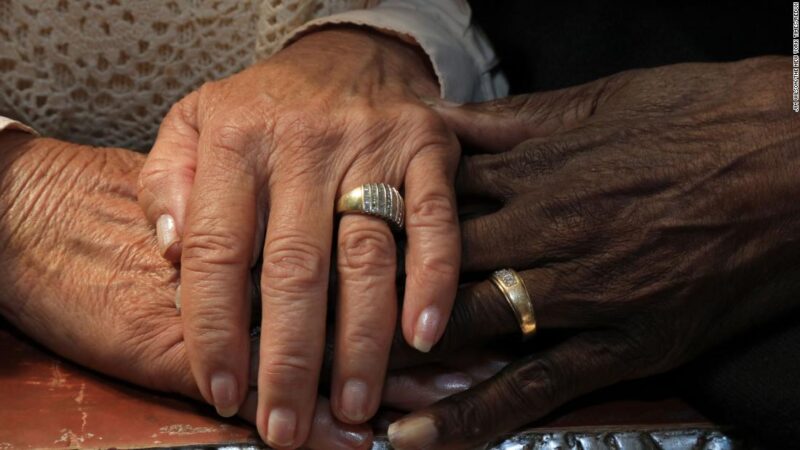 Racism is still a big problem in the US, but this trend offers some hope. By John Blake / CNN
Racism is still a big problem in the US, but this trend offers some hope. By John Blake / CNN
A White judge tells an interracial couple that “Almighty God” placed the races on different continents because he “did not intend for the races to mix.” A US Senator writes a book about the dangers of interracial unions called, “Take Your Choice: Separation or Mongrelization.” These are soundbites from an earlier era, when most White Americans were repulsed by the idea of interracial marriage. It was a time when White judges and politicians talked openly about protecting the “purity and integrity of the white race” and the evils of “race-mixing” and miscegenation — a pejorative term for intimate relations between people of different races.
That all began to change in June of 1967 when the US Supreme Court unanimously struck down an anti-miscegenation law in the Loving v. Virginia case. The case concerned the marriage between a white man, Richard Loving, and his wife, Mildred Jeter, a woman of Black and Native American ancestry. This dramatic shift represents a rare moment of racial progress that’s equally embraced by a vast majority of White and Black Americans. But it also begs a question that’s rarely, if ever, asked: Why have Americans reached a consensus on interracial marriage when other racial issues, like affirmative action and integration, remain fiercely contested? Read more
Political / Social
 Mitt Romney: America Is In Denial / The Atlantic
Mitt Romney: America Is In Denial / The Atlantic
Too many Americans are blithely dismissing threats that could prove cataclysmic.
I have witnessed time and again—in myself and in others—a powerful impulse to believe what we hope to be the case. We don’t need to cut back on watering, because the drought is just part of a cycle that will reverse. With economic growth, the debt will take care of itself. January 6 was a false-flag operation. A classic example of denial comes from Donald Trump: “I won in a landslide.” Perhaps this is a branch of the same delusion that leads people to feed money into slot machines: Because I really want to win, I believe that I will win. When entire countries fail to confront serious challenges, it doesn’t end well. Read more
Related: Mitt Romney Is in Denial. By Alex Shepard / TNR
 The Supreme Court has agreed to hear Moore v. Harper. It’s a grave threat to US democracy. By Ian Milhiser / Vox
The Supreme Court has agreed to hear Moore v. Harper. It’s a grave threat to US democracy. By Ian Milhiser / Vox
Moore v. Harper is a grave threat to US democracy, and the fate of that democracy probably comes down to Amy Coney Barrett.
The Supreme Court’s announcement on Thursday that it will hear Moore v. Harper, a case that could concentrate an unprecedented amount of power in gerrymandered state legislatures, should alarm anyone who cares about democracy. The case is perhaps the gravest threat to American democracy since the January 6 attack. It seeks to reinstate gerrymandered congressional maps that were struck down by North Carolina’s highest court because they “subordinated traditional neutral redistricting criteria in favor of extreme partisan advantage” for the Republican Party. Read more
 Abortion, Like Prohibition, Has a Clear Racial Dimension. By Charles M. Blow / NYT
Abortion, Like Prohibition, Has a Clear Racial Dimension. By Charles M. Blow / NYT
Last week, David Frum wrote a fascinating article for The Atlantic comparing our current abortion battle to Prohibition, another contentious issue that bitterly divided the nation. After a long, “titanic” struggle, the temperance movement succeeded in imposing a nationwide ban on alcohol — only to have it decline and collapse 13 years later. This may happen with abortion bans, but hopefully it won’t take that long. Frum was writing about the interconnectedness of restrictive impulses — and how one can be a gateway for others. Restrictions, he seemed to imply, can be complicated. Bigotry is a close cousin of prudence. Prohibition, in particular, had a complicated racial history. Enslavers used alcohol for years as a weapon to subdue the enslaved in this country. Read more
Related: Clarence Thomas earns our scorn. By Erin Aubry Kaplan / LA Times
 Our Gun Myths Have Held America Hostage for Too Long. By Francisco Canti / NYT
Our Gun Myths Have Held America Hostage for Too Long. By Francisco Canti / NYT
Guns have long been an integral part of our national mythology, woven deep into our most sacred lore about the winning of our independence, about manifest destiny and territorial expansion, about the defense of democracy and the spread of our empire across the globe. At the center of this mythos is an abiding archetype — the lone man and his gun. This figure (usually white and positioned in opposition to people of color) has been represented throughout history in many familiar forms: the musket-toting militiaman with a revolutionary thirst for liberty; the cowboy chasing freedom with a six shooter across a frontier full of hostile natives; or the soldier with a rifle deployed to conquer or save a distant people inferior to his own. In each case, the gun is an essential counterpart — serving, like King Arthur’s sword or Luke Skywalker’s lightsaber, as the one tool that makes possible the hero’s journey. Read more
Related: Accused Gunman Held Without Bail in Highland Park Parade Massacre. Mitch Smith and
 Akron police shooting inflicts more trauma on people of color. Suzette Hackney / USA Today
Akron police shooting inflicts more trauma on people of color. Suzette Hackney / USA Today
The video of Jayland Walker’s death is another one that will traumatize people of color. We watch. We mourn. We question why it happens again and again.
Merriam-Webster defines the word overkill this way. 1: a destructive capacity greatly exceeding that required for a given target 2: an excess of something (such as a quantity or an action) beyond what is required or suitable for a particular purpose 3: killing in excess of what is intended or required If Jayland Walker were still alive, he might have a thing or two to say about overkill. But Walker, only 25 years old, died in a hail of bullets in Akron, Ohio, fired from eight police officers, who continued to shoot him as he lay dying on the ground. Read more
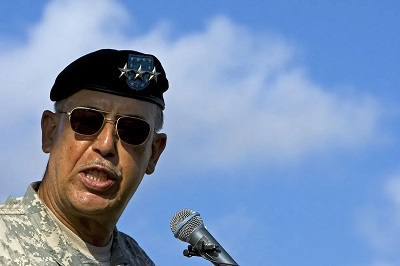 Gen. Russel Honoré: Trump’s coup attempt “put us in the banana republic club.” By Chauncey Devega / Salon
Gen. Russel Honoré: Trump’s coup attempt “put us in the banana republic club.” By Chauncey Devega / Salon
Retired general who studied Capitol security says “our government failed” on Jan. 6, and White House was complicit
It is a matter of public record that some of Trump’s advisers encouraged him to invoke the Insurrection Act and declare a national emergency, then ordering the U.S. military to seize voting machines in an effort to “prove” that the election had been “stolen” by nefarious forces. Was the incompetence displayed by the country’s law enforcement, military and others on Jan. 6 just random happenstance or something more sinister? In an effort to answer these questions, I recently spoke with retired Lt. Gen. Russel Honoré. He is a decorated 37-year U.S. Army veteran and a globally recognized expert on leadership, climate change and disaster preparedness. His expert commentary has been featured by the New York Times, CNN, CBS, the Washington Post, NPR, PBS and other leading media outlets. Read more
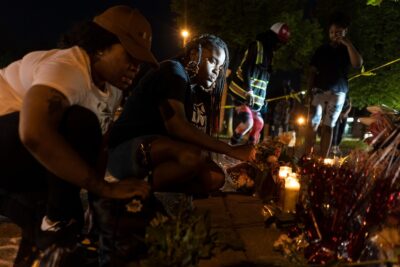 Garland weighs racial equity as he considers death penalty in Buffalo. By David Nakamura / Wash Post
Garland weighs racial equity as he considers death penalty in Buffalo. By David Nakamura / Wash Post
Capital punishment disproportionately affects minorities. Should it be levied against a white supremacist who massacred Black people?
The Biden administration’s pledge to pursue racial equity in the criminal justice system is facing a crucial test: whether federal prosecutors will seek the death penalty for the self-avowed white supremacist charged with slaughtering 10 Black people in a Buffalo grocery store in May. Some survivors and family members of those killed told Attorney General Merrick Garland during a private meeting in June that they are supportive of bringing a capital case against the 18-year-old suspect, Payton Gendron, according to people involved in the discussion. Their stance conflicts with the long-standing position of civil rights advocates, who have generally opposed the death penalty out of concerns it is unjust and disproportionately used against racial minorities. Read more
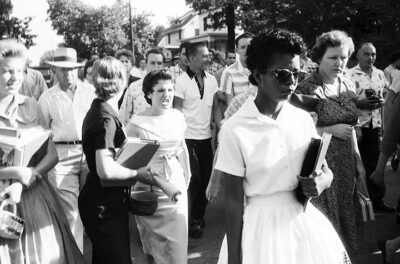 Decades after Brown v. Board, US schools still struggle with segregation – 4 essential reads. By Jeff Inglis / The Conversation
Decades after Brown v. Board, US schools still struggle with segregation – 4 essential reads. By Jeff Inglis / The Conversation
The Supreme Court’s Brown v. Board of Education decision, handed down in 1954, was supposed to end racial segregation in the nation’s public schools. But that work remains undone, as evidenced by a U.S. Department of Justice collection showing dozens of active school-desegregation cases even in 2022. To take a more in-depth look at the prevalence and nature of contemporary school segregation in the U.S., The Conversation sought scholars who could discuss the topic from various standpoints – from its legal history to its current status and modern-day efforts to make schools inclusive beyond racial identity. Here are four selections from our past coverage. Read more
 Many Black children are dying by suicide, doctors say: Understanding the why — and how to help. By Kelly Livingston / ABC News
Many Black children are dying by suicide, doctors say: Understanding the why — and how to help. By Kelly Livingston / ABC News
Some people are just learning about this “unfortunate reality,” one expert said.
The suicide rate among Black youth has been increasing along with the number of suicide attempts and the severity of those attempts, according to the most recent Youth Risk Behavior Survey from the Centers for Disease Control and Prevention, released in 2019. That report, tracking suicide trends among students ages 14-18 over the previous 10 years, found that of the 8.9% who reported attempting suicide, Black youth were among the populations with the highest rates of reporting attempts, accounting for 11.8%. By contrast, white youth accounted for 7.9% of those reported attempts and Hispanic youth accounted for 8.9%. Read more
Ethics / Morality / Religion
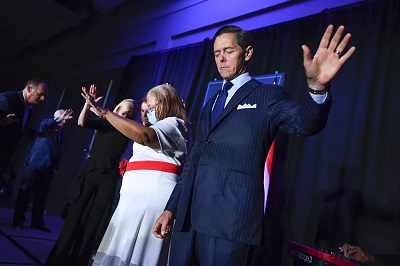 This conservative leader is trying to make white evangelical politics less white. By Susan Davis / NPR
This conservative leader is trying to make white evangelical politics less white. By Susan Davis / NPR
Ralph Reed prays on stage during a Donald Trump campaign event courting devout conservatives by combining praise, prayer and patriotism, Thursday, July 23, 2020, in Alpharetta, Ga.
At a recent gathering of thousands of religious conservative activists held by the Faith and Freedom Coalition, one thing immediately stood out: the crowd isn’t as white as it used to be. That’s not an accident, according to founder Ralph Reed. “Our goal is, over the coming decades, to build a genuinely multiracial, multiethnic, faith-based movement that changes the demographic location of our movement,” Reed said during a lunch roundtable with a handful of reporters. Read more
Related: Christian Nationalists Are Excited About What Comes Next. By Katherine Stewart / NYT
Related: The Culture War That More Christians Should Be Fighting. By Tish Harrison Warren / NYT
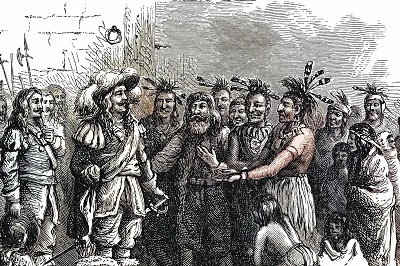 America and the “Heathen”: How we set ourselves apart from “sh**hole countries.” By Kathryn Joyce / Salon
America and the “Heathen”: How we set ourselves apart from “sh**hole countries.” By Kathryn Joyce / Salon
If the concept of “heathenism” seems outmoded, author Kathryn Gin Lum says it defines race and religion in America
The story of the “heathen,” writes Stanford religious studies professor Kathryn Gin Lum, in her new book, “Heathen: Religion and Race in American History,” is a familiar one. It’s a story “about how Americans have set themselves apart from a world of sufferers, as a superior people and a humanitarian people — a people who deserve the good fortune they have received and have a responsibility to spread it to others.” The necessary center of that story is the idea of “the heathen”: whether in its historical sense of people holding the “wrong religion” or its contemporary incarnation as a pitiable “third world” other, but always a figure in need of transformation and salvation. Under the supposedly beneficent mission of offering that salvation, Gin Lum writes, the concept has served as a wide-ranging “get out of jail free ticket” that “renders any harm excusable if done in the name of eradicating wrong religion.” Read more
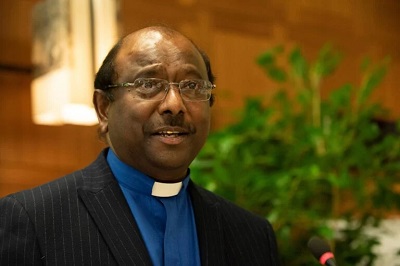 Incoming WCC head Jerry Pillay: ‘Our task is to proclaim God’s name.’ By Jack Jenkins / Religion News
Incoming WCC head Jerry Pillay: ‘Our task is to proclaim God’s name.’ By Jack Jenkins / Religion News
The Rev. Jerry Pillay told Religion News Service that controversy after his election to lead the World Council of Churches was ‘expected.’
The Rev. Jerry Pillay, the Presbyterian minister elected general secretary of the World Council of Churches last month, is taking the helm as the global ecumenical organization is already under pressure to expel the Russian Orthodox Church from its ranks due to Patriarch Kirill of Moscow’s justifications for his country’s brutal invasion of Ukraine. Read more
 The Catholic church is dictating reproductive health care — even in blue states. By Mary Elizabeth Williams / Salon
The Catholic church is dictating reproductive health care — even in blue states. By Mary Elizabeth Williams / Salon
This isn’t just about abortion. This is about impact on the health and safety of pregnant patients
Anyone familiar with how the Catholic church rolls would not be surprised that the Ethical and Religious Directives of the U.S. Conference of Catholic Bishops (ERDs) prohibit abortion and contraceptive — among other services like gender confirmation treatment, most fertility treatments and physician-assisted death — at a Catholic hospital. But Catholic doctrine is becoming a very big issue in subtler ways — in its ever widening role in American healthcare, and in the confusing, contradictory execution of religious dogma in medical options that can put patients at risk without their prior knowledge. Read more
 African Americans are creating their own mindfulness spaces. By Michelle Boorstein / Wash Post
African Americans are creating their own mindfulness spaces. By Michelle Boorstein / Wash Post
Owner Dana Smith leads a class at Spiritual Essence Yoga Studio on June 29 in Upper Marlboro, Maryland. (Bonnie Jo Mount/The Washington Post)
In the tiny Virginia town of soybean fields and no stoplights where Kimberly Matthews-Williams grew up, her Black church was family, and that felt really good — on Sundays. On her own later, as a student in D.C., something was missing, and she looked for a spiritual practice that felt to her like a connection to the universe, one she could carry into her every day, and began Buddhist chanting groups. There, she’d rarely see faces and bodies that looked like hers. Read more
Historical / Cultural
 What the History of Criminalizing Black Mothers Tells Us About the Post-Roe Legal Landscape. By Dahlia Lithwick / Slate
What the History of Criminalizing Black Mothers Tells Us About the Post-Roe Legal Landscape. By Dahlia Lithwick / Slate
Dorothy Roberts has been writing about the criminalization and surveillance of black women and their bodies for years now, dating back to the hysteria over so- called “crack babies” in the 1980s. She is the George A. Weiss University Professor of Law at the University of Pennsylvania, where she directs the Penn Program on race, science and society. She is the author of four books, and her most recent book is . “Torn Apart: How the Child Welfare System Destroys Black Families – and How Abolition Can Build a Safer World.” (Basic Books 2022). She joined me on the Amicus podcast last weekend to talk about the ways in which criminalizing miscarriage, abortion, and motherhood are all part of a long tradition of American law, but these laws tended to target Black women. What she describes is a world in which mothers face a lose-lose legal regime in which they cannot terminate their pregnancies, and are also not permitted by the state to raise their children. Our conversation has been edited lightly for clarity. Read more
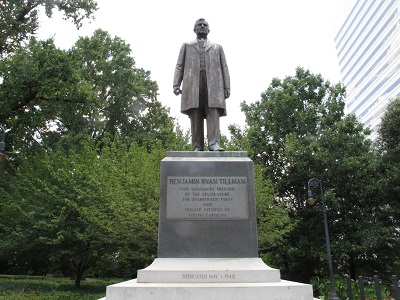 July Fourth parade led to a massacre of Black people in Hamburg, S.C. By Ronald G. Shafer / Wash Post
July Fourth parade led to a massacre of Black people in Hamburg, S.C. By Ronald G. Shafer / Wash Post
A statue of Benjamin “Pitchfork Ben” Tillman, former South Carolina governor and U.S. senator, in Columbia, S.C., in 2015. Some civil rights leaders want the statue to mention Tillman’s violent segregationist views and role in the Hamburg Massacre, where seven Black people were killed in 1876. (Jeffrey Collins/AP)
On July 4, 1876, in Hamburg, S.C., about 40 members of the local all-Black unit of the state militia paraded down Main Street to celebrate the centennial of America’s independence. At about 6 p.m., two young White men in a horse-drawn buggy rode toward the troops and demanded to pass through. Capt. D.L. “Dock” Adams asked the White men — Henry Getzen and his brother-in-law Thomas Butler — to go around the marchers on the 150-foot-wide grassy street. Getzen refused, asserting he wouldn’t move to the side “for no damned” Black people, using a slur. After a short argument, the troops stepped out of the way. Four days later, more than 200 armed White men — many of them “Red Shirts” from paramilitary rifle clubs — arrived in Hamburg with a former Confederate general demanding that the militia unit disarm. A standoff led to an all-out bloody battle, which became known as the “Hamburg Massacre” and saw seven Black men murdered and several more wounded. Read more
 Black Marines who served on racially segregated Montford Point are being honored. By Jay Price / NPR
Black Marines who served on racially segregated Montford Point are being honored. By Jay Price / NPR
A project started in 2019 to restore key buildings used by the first Black Marines — and protect the structures from the effects of climate change — is nearly complete. During the 1940s, about 20,000 men trained under harsh conditions on a racially segregated base in North Carolina known as Montford Point .It’s now part of Camp Lejeune — the main Marine Corps infantry base for the East Coast — and is called Camp Johnson after one of those first Black marines, Sgt. Maj. Gilbert “Hashmark” Johnson, a storied drill instructor. Read more
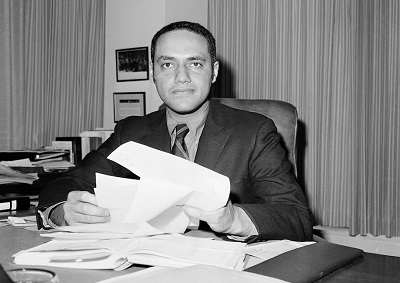 Clifford Alexander Jr., first Black secretary of Army, dies at 88. By Alexa Mills / Wash Post
Clifford Alexander Jr., first Black secretary of Army, dies at 88. By Alexa Mills / Wash Post
The Harlem-raised, Ivy League-educated lawyer spent his career seeking to shatter racial boundaries with statesmanlike calm
Guided by powerful mentors in academia, law and government, Mr. Alexander was the first Black student-body president at Harvard University, the first Black partner at the elite Washington law firm Arnold & Porter and spent his career seeking to shatter racial boundaries with statesmanlike calm. He seemed destined for elective office but lost a close race for D.C. mayor in 1974, shortly after the city won home rule. Read more
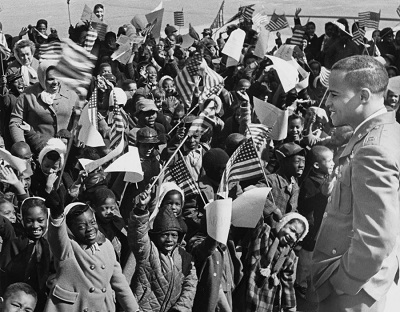 Ed Dwight was in line to be the first Black astronaut. History had other ideas. By Mycah Hazel / NPR
Ed Dwight was in line to be the first Black astronaut. History had other ideas. By Mycah Hazel / NPR
Air Force Captain Edward J. Dwight, Jr. gets a hero’s welcome from youngsters at Langdon Elementary School in Washington, D.C. in 1964.
In an attempt to counter the Soviets and to increase support for the space race among Black Americans, some began urging the administration to send a Black person to space. Edward R. Murrow, then Director of the U.S. Information Agency wrote a memo to the White House saying, “Why don’t we put the first non-white man in space?” Edward J. Dwight, Jr. was a 27-year-old Air Force Captain at the time. Originally from Kansas City, he loved flying from a young age — so much so that he’d go on walks to the local airport with his mother every day. Read more
Sports
 Brittney Griner is a hostage, plain and simple. By the Editorial Board / Wash Post
Brittney Griner is a hostage, plain and simple. By the Editorial Board / Wash Post
Brittney Griner, the WNBA superstar, has been detained by the Russian government since Feb. 17. On Friday, a trial began in a Moscow suburb on the allegation that she was carrying vape cartridges containing cannabis oil when passing through a Moscow-area airport. But the word “trial” hardly captures what is really happening. Russia is not a state governed by rule of law; it is run by a strongman and his clans, including a powerful security service. They have her in their clutches. Read more
Related: Brittney Griner writes letter to Joe Biden pleading for help in Russia. By AP and USA Today
 11 weeks after Jackie Robinson’s debut, Larry Doby arrived. By Frederic J. Frommer / Wash Post
11 weeks after Jackie Robinson’s debut, Larry Doby arrived. By Frederic J. Frommer / Wash Post
Indians owner Bill Veeck said Robinson had proved to be a legitimate major leaguer. “So I wanted to get the best of the available Negro boys while the grabbing was good,” he said. “Why wait? Within 10 years Negro players will be in regular service with big league teams, for there are many colored players with sufficient capabilities to make the majors.” Doby, then 23, played in his first game July 5, 1947 — becoming the second Black player in modern baseball history, less than three months after Robinson broke the sport’s color barrier with the Brooklyn Dodgers. Read more
 Former NFL star Demaryius Thomas’ family says he had CTE. By CBS News
Former NFL star Demaryius Thomas’ family says he had CTE. By CBS News
Former NFL star Demaryius Thomas, who died last December at age 33, had CTE, his family said Tuesday. Boston University CTE Center researchers diagnosed the four-time Pro Bowl wide receiver with stage 2 chronic traumatic encephalopathy following a brain study through the Concussion Legacy Foundation. Thomas’ family released the findings of the study. “Once I became aware of CTE and began to familiarize myself with the symptoms, I noticed that Demaryius was isolating himself and I saw other changes in him,” Katina Smith, Demaryius’ mother, said in a statement. “He was just so young, and it was horrible to see him struggle. His father and I hope all families learn the risks of playing football. We don’t want other parents to have to lose their children like we did.” Read more
Site Information
Articles appearing in the Digest are archived on our home page. And at the top of this page register your email to receive notification of new editions of Race Inquiry Digest.
Click here for earlier Digests. The site is searchable by name or topic. See “search” at the top of this page.
About Race Inquiry and Race Inquiry Digest. The Digest is published on Mondays and Thursdays.
Use the customized buttons below to share the Digest in an email, or post to your Facebook, Linkedin or Twitter accounts.